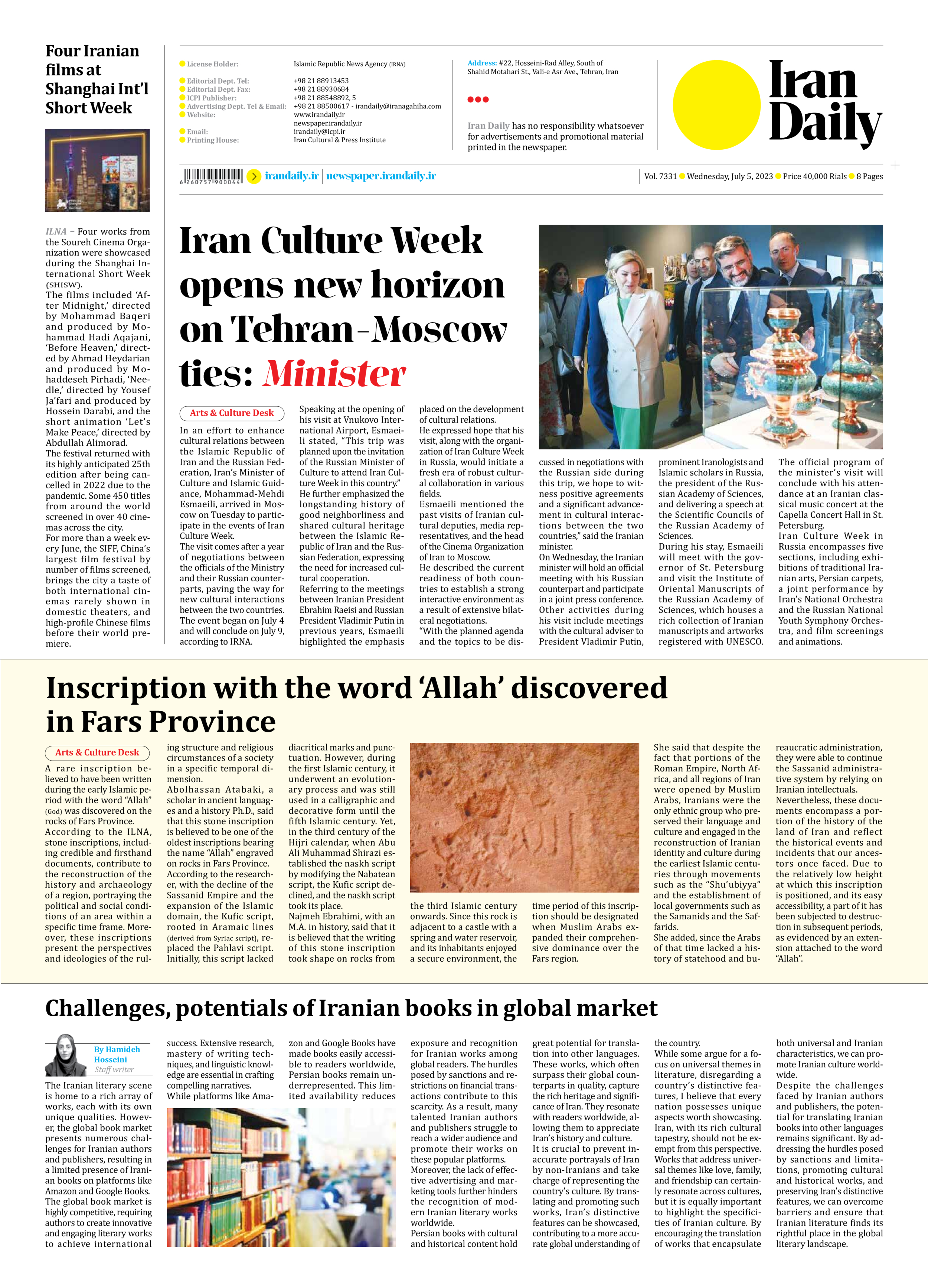
Inscription with the word ‘Allah’ discovered in Fars Province
A rare inscription believed to have been written during the early Islamic period with the word “Allah” (God) was discovered on the rocks of Fars Province.
According to the ILNA, stone inscriptions, including credible and firsthand documents, contribute to the reconstruction of the history and archaeology of a region, portraying the political and social conditions of an area within a specific time frame. Moreover, these inscriptions present the perspectives and ideologies of the ruling structure and religious circumstances of a society in a specific temporal dimension.
Abolhassan Atabaki, a scholar in ancient languages and a history Ph.D., said that this stone inscription is believed to be one of the oldest inscriptions bearing the name “Allah” engraved on rocks in Fars Province.
According to the researcher, with the decline of the Sassanid Empire and the expansion of the Islamic domain, the Kufic script, rooted in Aramaic lines (derived from Syriac script), replaced the Pahlavi script. Initially, this script lacked diacritical marks and punctuation. However, during the first Islamic century, it underwent an evolutionary process and was still used in a calligraphic and decorative form until the fifth Islamic century. Yet, in the third century of the Hijri calendar, when Abu Ali Muhammad Shirazi established the naskh script by modifying the Nabatean script, the Kufic script declined, and the naskh script took its place.
Najmeh Ebrahimi, with an M.A. in history, said that it is believed that the writing of this stone inscription took shape on rocks from the third Islamic century onwards. Since this rock is adjacent to a castle with a spring and water reservoir, and its inhabitants enjoyed a secure environment, the time period of this inscription should be designated when Muslim Arabs expanded their comprehensive dominance over the Fars region.
She said that despite the fact that portions of the Roman Empire, North Africa, and all regions of Iran were opened by Muslim Arabs, Iranians were the only ethnic group who preserved their language and culture and engaged in the reconstruction of Iranian identity and culture during the earliest Islamic centuries through movements such as the “Shu’ubiyya” and the establishment of local governments such as the Samanids and the Saffarids.
She added, since the Arabs of that time lacked a history of statehood and bureaucratic administration, they were able to continue the Sassanid administrative system by relying on Iranian intellectuals.
Nevertheless, these documents encompass a portion of the history of the land of Iran and reflect the historical events and incidents that our ancestors once faced. Due to the relatively low height at which this inscription is positioned, and its easy accessibility, a part of it has been subjected to destruction in subsequent periods, as evidenced by an extension attached to the word “Allah”.







